As a gamer, you know that there is nothing more important than having the best gaming monitor but not sure about ‘Is HDR Gaming Monitor Worth It’?. The technology behind these monitors has changed dramatically over the past few years and they keep getting better every day.
Now with HDR or High Dynamic Range, your games will look even more amazing on your screen! If you want to know if an HDR Gaming Monitor is worth it for you, read this article and we will explain everything in detail.
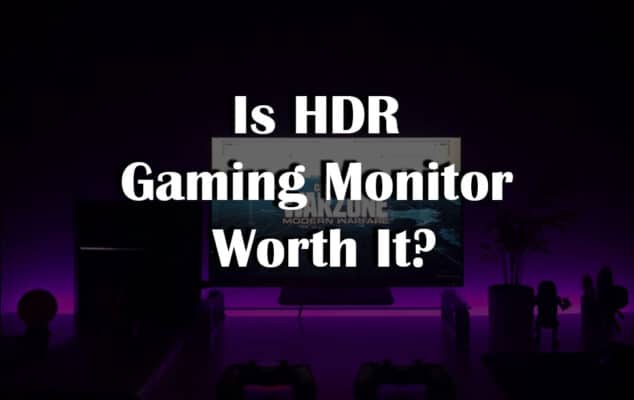
So, Is HDR Gaming Monitor Worth It?
HDR is worth it for gaming if you prefer vibrant colors with a wider color gamut, better shadows, black levels, nits, luminance, chrominance, improve picture quality by extending contrast ratio but requires compatible content and is available with IPS & VA panel types.
HDR is a technology that allows for the display of more than one billion colors on screens, which means you will have a better viewing experience. Most high-end monitors support HDR and many mid-range ones as well; however, it’s not supported by TN panels or games just yet due to their lower quality graphics outputting capabilities.
1. What does HDR do in gaming?
HDR monitors, with the help of HDR signals and compatible content, improve your picture quality by extending the contrast ratio. They make colors more vibrant than before so you can enjoy watching movies or playing games in a whole new way!
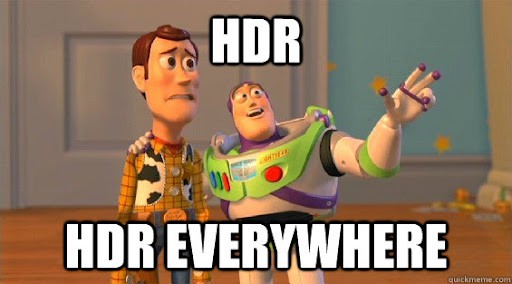
HDR stands for High Dynamic Range; it’s an open standard used primarily by video game developers at the present time who want their work to look its best on any screen – whether that be TV shows during gameplay footage (and even when they aren’t!)
Luminance and Chrominance
There are 2 factors that truly differentiate HDR from the others. Luminance refers to how intense light is emitted from a surface, measured per unit – brighter surfaces emit more luminous rays for example, and play an important role in color accuracy so better lumens mean better pictures!
Chrominance, on the other hand, describes the difference between what you see when viewing your monitor compared with its potentiality based on higher luminances/luminosities which leads to superior video quality especially considering SDR displays only provide us with shades of grey instead.
Also Read: TV vs Monitor For Gaming? 10 Ways To Choose The Best
Colour Space and Color Gamut
The more colors you have, the better your monitor will look. If HDR is an option for your setup then it means that all hues are supported with increased brightness and dynamic range thanks to new technology in which Color Gamut has replaced this term from before – meaning high-quality displays can now also output wider ranges of grey-scale images than ever before.
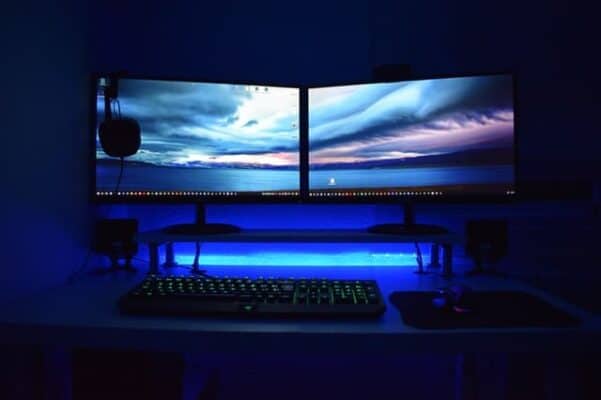
Shadows and Black Levels
When choosing a monitor, it is important to take color quality into account. The more bits in your screen for each pixel-the better the colors look and display on that screen! HDR has improved upon this by including all ranges of light (or dark) seen with lighting up or dimming brightness levels which means you can enjoy rich media content at its best without any loss due to poor pixels anymore because everything will be perfect from blacks through whites – just like what we see when looking off into outer space where there are no lights around us shining down onto.
Nits, Brightness, and Stops
With so many different monitors on the market, it is important to know what they are rated in terms of brightness. Nits refer to monitor’s brightness levels and higher numbers mean brighter screens with better colors that can be seen up close or from farther away distances without an issue due to both factors being relative opposites when considering your personal viewing distance (you’ll sit much closer).

HDR or high dynamic range displays use a process called Stops to catch the brightness before it is transmitted through your screen. This means that even though an HDR monitor has more nit values and stops than standard ones (at least 1000 Nits and 7 Stops), they’re still able to produce brighter colors with less noise in them due to their wide-gamut color spaces compared to those without such features like SDR screens which only offer about 200 nits of luminance on average.
Also Read: Are Ultrawide Monitors Worth It For Gaming? 7 Best Ways To Find Out
2. What HDR format to choose from?
HDR is a set of standards that are designed to improve contrast and color depth in scenes. There are five different HDR formats supported by various manufacturers, including HDR10, HDR10+, HLG, Dolby Vision, and Technicolor but all do basically the same thing: make dark or bright scenes look better than before.
HDR10
HDR10 Media Profile, more commonly known as HDR10, is the most widespread of all formats when it comes to High Dynamic Range. This means that there’s no backward compatibility with SDR and only static metadata in their video files–they don’t use dynamic or adaptive techniques which allow consumers to display capabilities for content creators’ intentions based on what they want out of your viewing experience.
HDR10+
HDR10+ is a new high-dynamic-range video technology that provides consumers with the best possible viewing experience, no matter what their display or source. HDR content can be enjoyed on any device from TV sets to portable devices thanks to this innovative standard which adjusts frames in an attempt at optimal quality based on your screen’s capabilities according to the creator’s intentions.

The metadata is used by both broadcast networks and streaming services alike when producing videos for these platforms so they don’t have too much work being done during production time!
Dolby vision
Dolby Vision is a new HDR standard that uses dynamic metadata to improve image quality. It’s designed with the aim of giving viewers better visuals and increased accuracy in colors, so they can enjoy themselves as if there were no limitations on their TV sets or devices!
Also Read: Is A Curved Monitor Worth It For Gaming? 7 Best Ways To Find Out
HLG
HLG is a Hybrid Log-Gamma video signal that can be played on SDR and HDR screens. This means viewers will not have their viewing experience compromised due to the type of TV they’re watching it from, which has become increasingly important as more people switch over their TVs for high-tech models with enhanced capabilities such as wider dynamic range or higher resolutions.

Technicolor
It’s time to make your HDR experience the best it can be. Advanced by Technicolor, a suite of High Dynamic Range (HDR) production and display solutions that leverage Artificial Intelligence to maximize image quality in any format!
Fake HDR
There’s been a lot of noise on YouTube, Reddit, and other platforms recently about “Fake HDR.” It refers to the reluctance of studios to properly grade their limited video services for peak brightness with vibrant colors that pop out from the screen in order to make them look better than they really are.
3. HDR hardware requirements
Graphics cards
HDR is a great way to show off your favorite games, but it’s not all fun and games. You need the right hardware in order for HDR technology to work its magic: Nvidia GPUs from GTX 950 onward support High Dynamic Range as well as AMD cards starting with R9 380.
Monitor panel types
A high resolution like 4K monitors is welcome too so long as they have one of those new fancy IPS/VA panels which can actually produce colors accurately enough without looking washed out or inaccurate at higher brightness levels due to an old issue known phenomenally referred to by scientists simply put “IPS glow”.
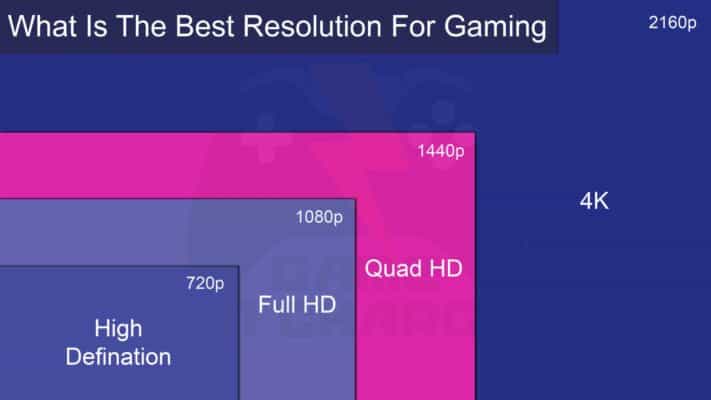
Also Read: What Is The Best Resolution For Gaming? 8 Significant Ways
HDR ports
HDMI and DisplayPort are the two most important ports for HDR. The latest versions of these HDMI 2.0 or DP 1.4 will support this feature but previous ones will not so make sure you keep an eye out!
4. HDR or QHD/UHD?
HDR has been gaining traction in the photography world as a better alternative to higher resolutions. HDR provides realistic contrast and lighting, which can’t be achieved with just one resolution alone; it also reduces aliasing thanks to its multiple exposures. However, you should consider both before choosing between them because they have different purposes that contribute towards quality differently.
It is true that HDR will not affect performance in the slightest, but running games at higher resolutions may require more GPU power. This means you should probably choose your monitor wisely depending on what type of gameplay experience you want for yourself!
5. Do your games support HDR
HDR is the future of gaming. Console gamers have been enjoying high resolution and fast frame rates for years now, but only PC owners with powerful graphics cards can fully take advantage of HDR to make their games even more immersive than ever before!

Following are the top 10 games that support HDR:
- Shadow Of The Tomb Raider
- Resident Evil Village
- Microsoft Flight Simulator
- Death Stranding
- Assassin’s Creed Odyssey
- Hellblade: Senua’s Sacrifice
- Call Of Duty: Modern Warfare
- Star Wars: Battlefront II
- Battlefield V
- Cyberpunk 2077
6. Which gaming monitor panel support HDR
Modern monitors are either IPS, VA, or TN. The three differ in a couple of ways but most importantly when it comes to HDR support, they all have different properties and capabilities for displaying high dynamic range graphics which is what makes them so popular today! When it comes to HDR, the bottom line is that IPS and VA panels support the technology while TN ones do not.
| Aspects | Panel Type | ||
| TN | VA | IPS | |
| Response Time | 1ms | 1 – 4ms | 4 – 10ms |
| Viewing Angle | Limited | Better | Excellent |
| Image Quality | Poor | Good | Excellent |
A new technology called IPS (in-plane switching) is better for those who prefer visuals over performance, TN (twisted nematic) architecture provides an excellent balance of visual clarity and responsiveness in competitive multiplayer settings. VA display panels offer a good compromise between the two with their decent resolution coupled with affordable prices.
Also Read: How To Choose A Gaming Monitor? 11 Best Factors To Consider
7. Prioritization of refresh rate, response time, and adaptive-sync
First and foremost, an HDR gaming monitor should be able to provide the sort of refresh rate you like for games you play. Many on the market use ISP panels with slower response times or lower frame rates than TN screens traditionally used in a game setting so look out specifically designed as such will have more capabilities when playing video games due to their increased ability time frames per second.
| Factor | Response time | Refresh rate |
| Range | 5 milliseconds or below | 75 Hz or above |
| Scale | Lower is better | Higher is better |
| Sweet spot | 1 ms | 144 Hz |
Gamers should still prioritize things like refresh rate, response time, and the Nvidia G-Sync or AMD FreeSync range than HDR. It’s not that gamers don’t care about having a display with high dynamic range capabilities – they just have other priorities in their life!
Best HDR gaming monitor
With the release of HDR gaming monitors, it’s now possible to experience high-quality graphics without any lag or blur. With a new wave of consoles offering backward compatibility for 4K video and 8k resolution screens along with 120fps frame rates on current generation games, these monitors are set up perfectly so that gamers can get their fix in between releases!
Check out the complete list of the best gaming monitors.
| # | Name | HDR | Panel Type | Screen Type | Refresh Rate | Response Time | Adaptive Sync | Our Recommendation |
| 1 | Samsung Odyssey G7 | HDR 600 | VA | Widescreen Curved | 240Hz | 1ms | G-Sync | Read More |
| 2 | ViewSonic Elite XG270 | HDR 400 | IPS | Standard Widescreen | 240Hz | 1ms | G-Sync | Read More |
| 3 | Acer Nitro VG271U | HDR 400 | IPS | Standard Widescreen | 240Hz | 1ms | G-Sync | Read More |
| 4 | Sceptre C305B-200UN | HDR 400 | VA | Ultrawide Curved | 200Hz | 5ms | FreeSync | Read More |
| 5 | ASUS TUF VG27AQ | HDR 10 | IPS | Standard Widescreen | 165Hz | 1ms | G-Sync | Read More |
Is HDR worth it for gaming?
The question of whether an HDR gaming monitor is worth the price tag really depends on what you’re looking for in your screen. Some gamers might prefer a wider color gamut and contrast ratio, while others may want better response time performance when playing games.
Is HDR worth it for PlayStation and Xbox consoles?
HDR gaming is coming to the next level, with games like Fortnite, Warzone, and Valorant utilizing this new technology. HDR (High Dynamic Range) enables a deeper color palette as well as increased contrast that makes every scene pop more than ever before! It’s no surprise these types of graphics are becoming increasingly popular on all platforms – PlayStation 5, 4 Slim/Pro; Xbox Series X/S, Xbox One S & X respectively.
HDR is a great option for those who want the best image quality their monitor or screen can produce. Most high-end monitors support this technology, and it improves your experience as well; giving you optimal gaming with improved viewing angles.
It is difficult to answer this question, but we will say that if you are a hardcore gamer and want the absolute best monitors on the market, then an HDR monitor might be worth it for you. If not, then perhaps save your money or buy something else. Let us know in the comments below what you think about this hot topic!
